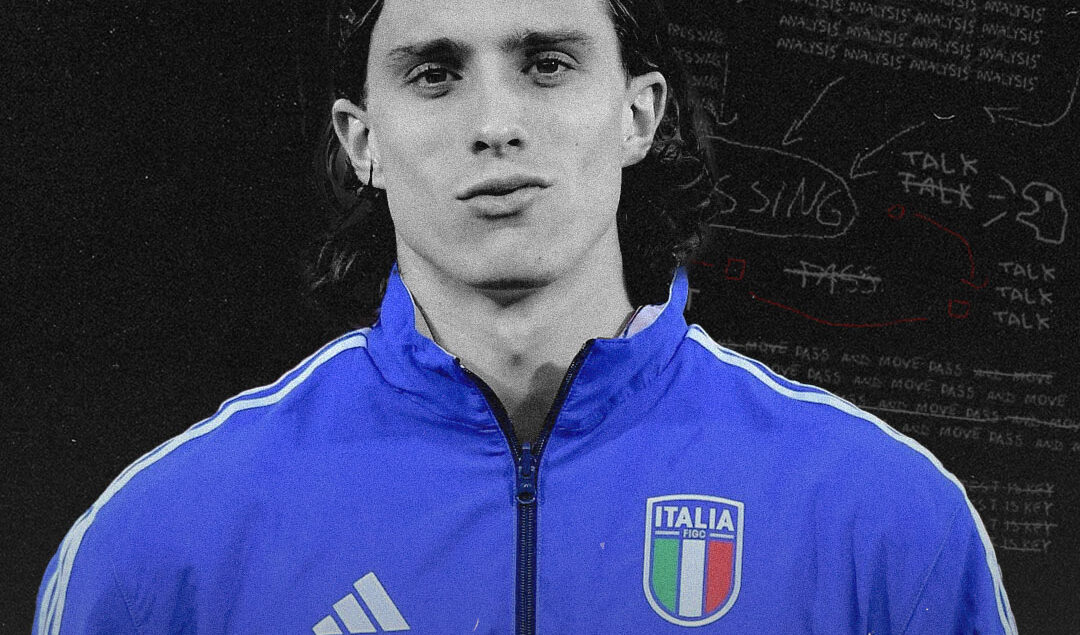Spain vs. Italy: The Return of Long Ball
A river flows from Spain, surging with an unstoppable force, threatening to wash away all of Germany. It made a turbulent stop at Veltins-Arena, where it swallowed Italy whole. European champions though they are, the Azzurri had no answer to the relentless currents crashing down upon them.
In this year’s EURO 2024, hosted by Germany, Spain has dared to turn the page on their fabled tiki-taka, the very philosophy that once brought them two European titles and a World Cup. Under the bold leadership of new manager Luis de la Fuente, La Roja has embraced a devastating directness that has already swept aside Croatia and now, the mighty Italians.
This Spain is an essay in change, a meditation on the fluidity of identity and the courage to evolve. The patient, mesmerizing rhythm of their former play has given way to a brisk, decisive tempo, a testament to the power of adaptation. De la Fuente’s influence is a delicate brushstroke on the canvas of football, blending past mastery with present necessity.
As they navigate the currents of the tournament, Spain’s journey is more than a quest for victory; it is an exploration of rebirth and renewal. The river from Spain flows with intent, carrying with it the dreams of a nation ready to reclaim its place at the pinnacle of European football.
Spain have been a chameleon in this competition, seamlessly adapting to the opposition while playing some of the most exhilarating football in the Euros. In the build-up, De la Fuente employs his two center-backs with the full-backs spread wide and deep, aimed at playing out from the back against the opposition’s press.
Italy attempted to counter this with a man-to-man pressing structure and Nicolo Barella pressed Spain’s center-backs, Robin Le Normand and Aymeric Laporte, while Jorginho marked Rodri. Fabian Ruiz dropped deeper to support Rodri, drawing Davide Frattesi with him. This left Pedri free in advanced midfield, prompting Italy to shift central defender Riccardo Calafiori into midfield to mark him.
Spain, however, had an effective counter. Unai Simon consistently launched long balls to Alvaro Morata, who would knock the ball down to wide players Nico Williams on the left or Lamine Yamal on the right. To mitigate this, Italy dropped deeper but then had to manage Spain’s full-backs, Dani Carvajal and Marc Cucurella. Federico Chiesa and Lorenzo Pellegrini were tasked with pressing these full-backs, but this created new opportunities for Spain. When Chiesa and Pellegrini moved wide, gaps appeared in Italy’s defensive structure, which Spain exploited.
De la Fuente’s side often attacked down the left. Williams repeatedly bested Giovanni Di Lorenzo, delivering dangerous crosses into the box. Di Lorenzo had no support because Morata was occupying Alessandro Bastoni. This left space between Di Lorenzo and Bastoni for Spanish players to exploit, with Cucurella making runs into this gap. One such instance saw Cucurella receive a pass from Williams and cut the ball back for Pedri, who narrowly missed.
The constant pressure from these patterns led to the winning goal. Williams beat Di Lorenzo and crossed for Morata, whose flick forced a save from Donnarumma. The ball, however, rebounded off Calafiori and into the net. Defensively, Spain were aggressive in their press, disrupting Italy’s build-up.
Morata pressed Donnarumma, covering Bastoni, while Yamal pressed Calafiori. Nico Williams pressed Di Lorenzo, and Cucurella pressed Chiesa, leaving Di Marco free. Spain’s pressing strategy focused on congesting the area around the ball, forcing Italy into mistakes or less dangerous areas. Even when Italy broke through, Spain’s man-to-man press effectively stifled their progress.
As Europe readies itself for the Round of 16 , all eyes fixate on Spain’s emerging stars with a mixture of hope and trepidation. pondering the legacy this young generation will leave on the halls of European football. Amidst the fervor and fervent debates, one thing is clear: whether they triumph or falter, La Roja in this tournament have left an indelible mark—a tattoo of a different way to play in a world obsessed with triangles.
By: Tobi Peter / @keepIT_tactical
Featured Image: @GabFoligno / Alessandro Sabattini / Getty Images
